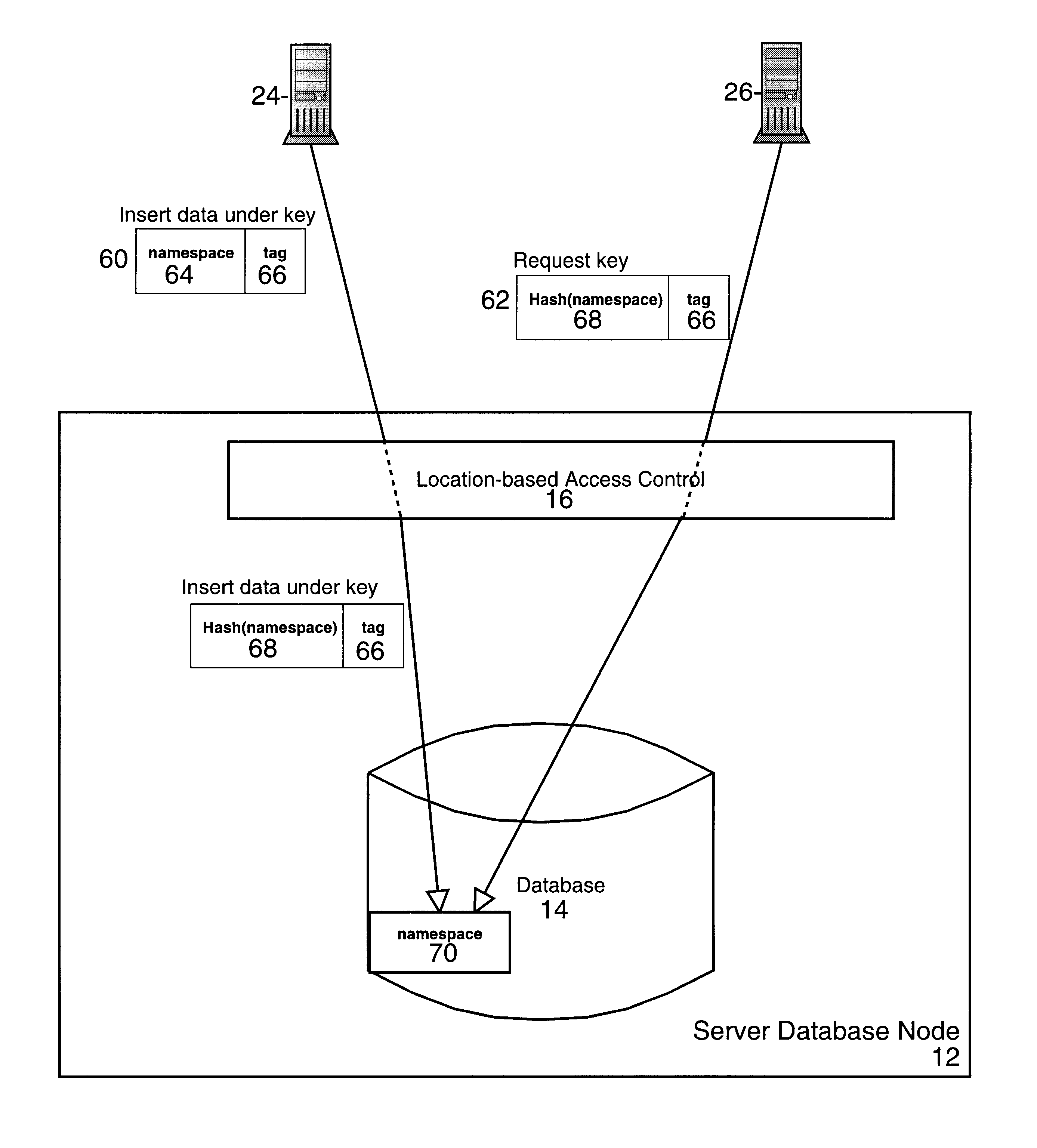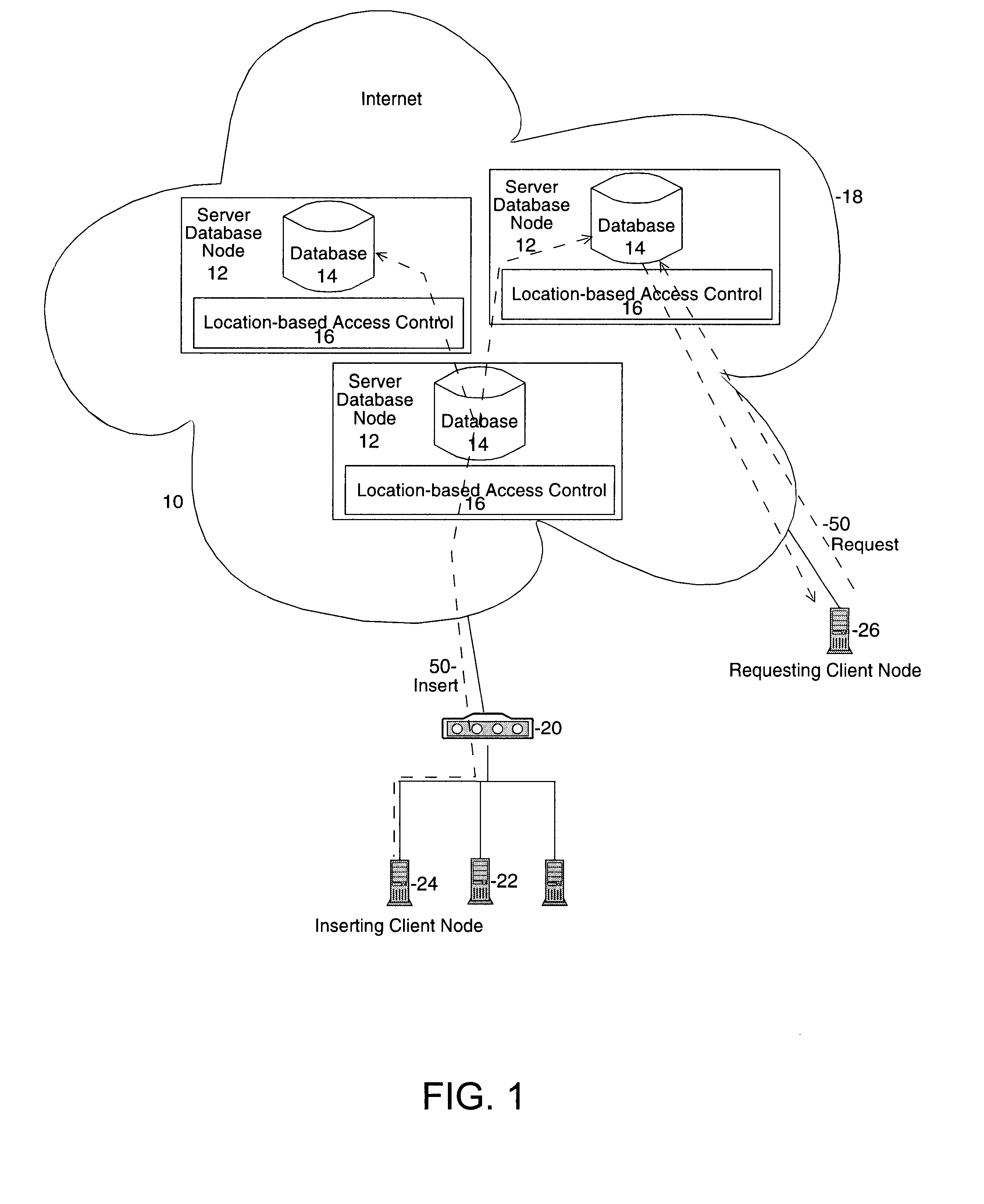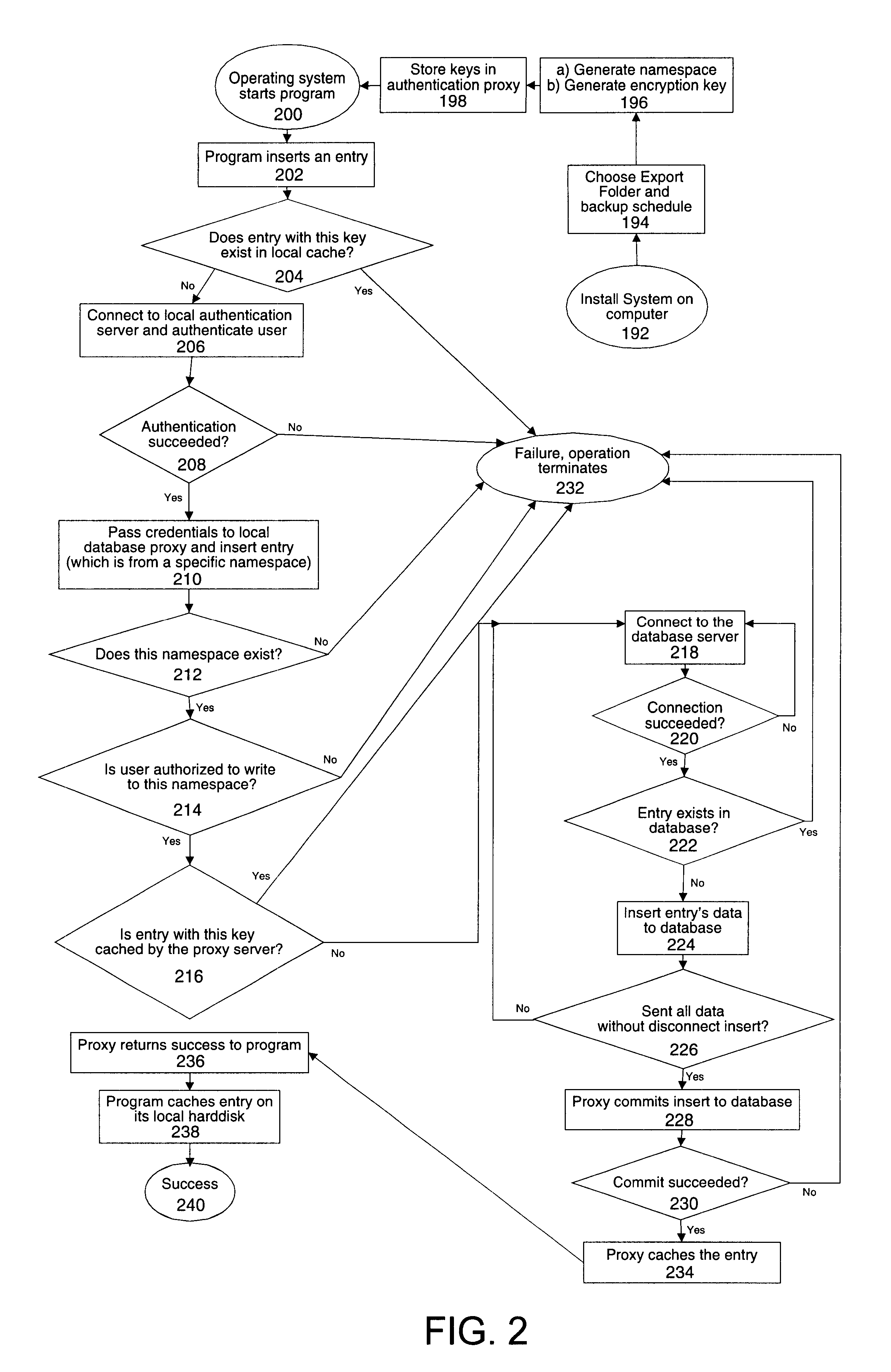Method and system for asynchronous transmission, backup, distribution of data and file sharing
a technology of asynchronous transmission and data, applied in the field of method and system for asynchronous transmission, backup, distribution of data and file sharing, can solve the problems of unguaranteed retrieval of data that is inserted by other users, user who wishes to retrieve information may have to wait for a long time, and achieve the effect of facilitating the sharing of data
- Summary
- Abstract
- Description
- Claims
- Application Information
AI Technical Summary
Benefits of technology
Problems solved by technology
Method used
Image
Examples
Embodiment Construction
Consider a newsgroup, where postings are inserted using keys on the form "Posting 1", "Posting 2", "Posting 3" . . . . The way you'd create a new posting is by finding the highest posting number, say 37, and then inserting the new posting as "Posting 38". If someone else beat us to it, we insert as 39 instead, etc. As we can see, in many cases the data being inserted remains the same, and we try to insert it under different keys.
The protocol should therefore be stateful. Even if the insert of an entry fails, we should be able to change its key and try inserting it again, without re-transmitting the entry's data, which may be megabytes in size. The protocol looks something like this:
User: Set the data to for insert "1" to "Testing, 1, 2, 3".
Server: Ok.
User: Set the key for insert "1" to "Posting 12".
Server: Ok.
User: Set the data to for insert "2" to "Another test".
Server: Ok.
User: Set the key for insert "2" to "Posting 13"
Server: Ok.
User: Prepare to commit the inserts.
Server: Can't d...
PUM
 Login to View More
Login to View More Abstract
Description
Claims
Application Information
 Login to View More
Login to View More - R&D
- Intellectual Property
- Life Sciences
- Materials
- Tech Scout
- Unparalleled Data Quality
- Higher Quality Content
- 60% Fewer Hallucinations
Browse by: Latest US Patents, China's latest patents, Technical Efficacy Thesaurus, Application Domain, Technology Topic, Popular Technical Reports.
© 2025 PatSnap. All rights reserved.Legal|Privacy policy|Modern Slavery Act Transparency Statement|Sitemap|About US| Contact US: help@patsnap.com



